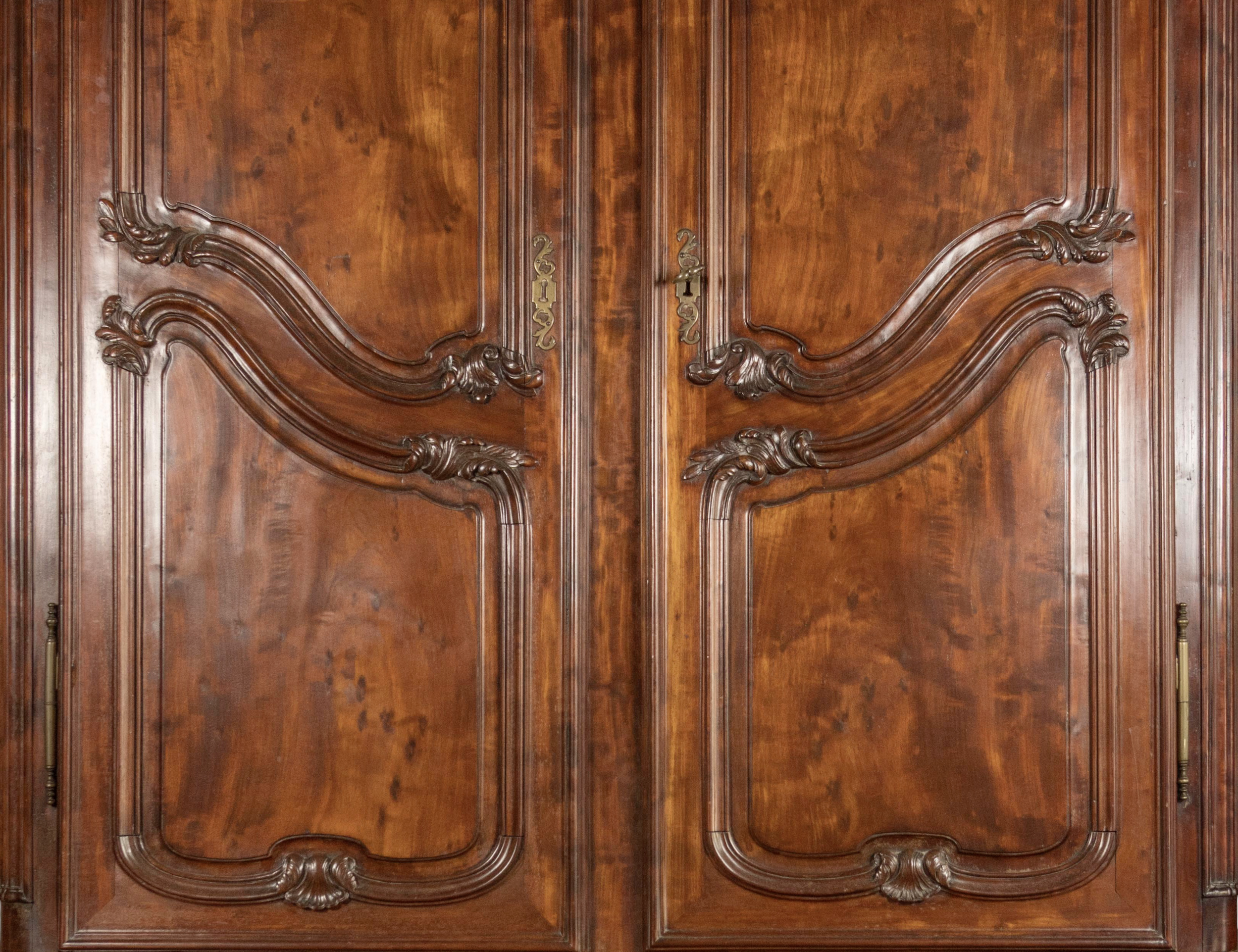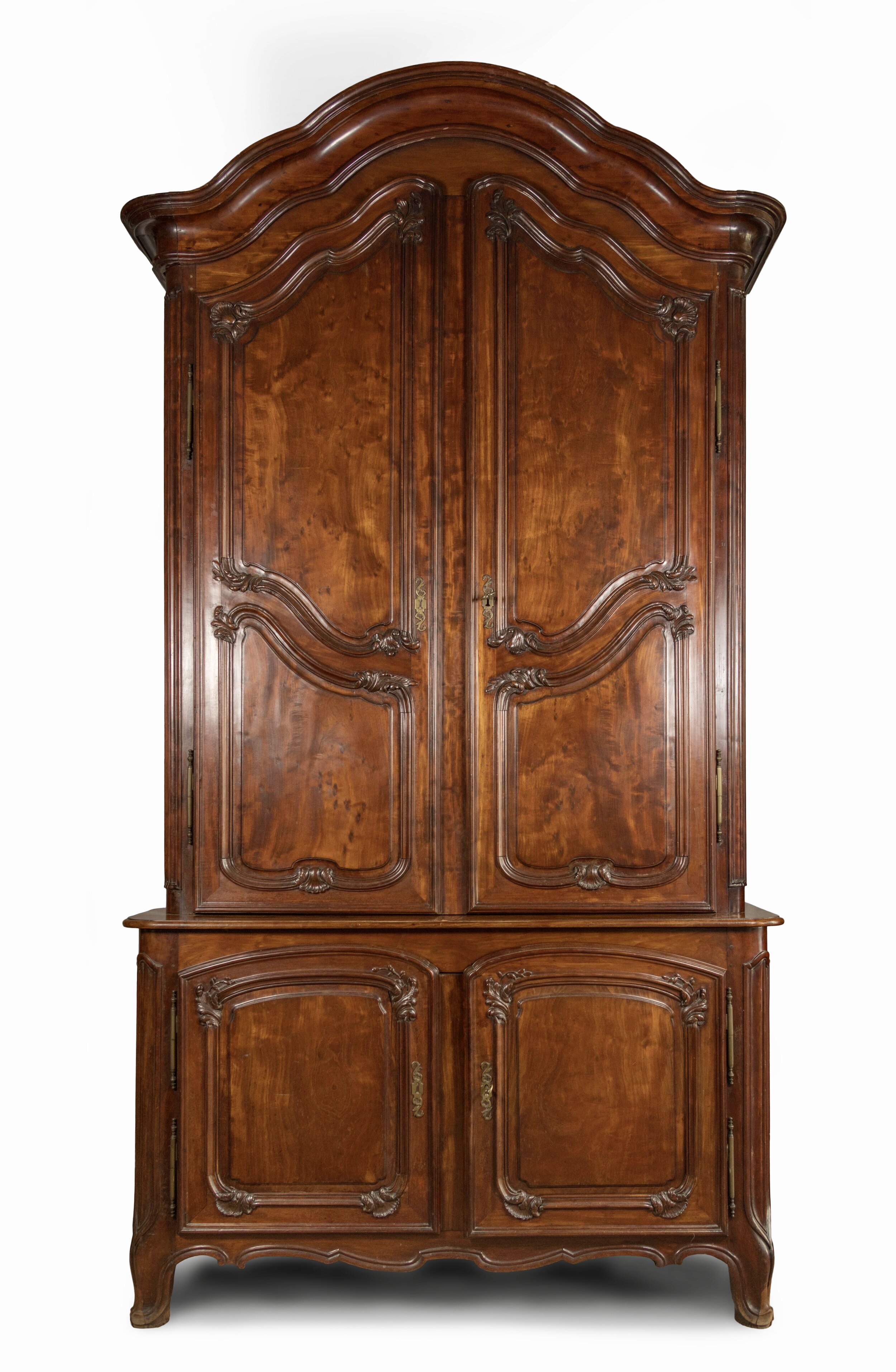Mahogany Presentation Cabinet circa 1760 from the Port of Dunkirk (SOLD)
An exceptional two-tiered presentation cabinet in solid mahogany, richly molded and sculpted, complete with original steel locking mechanisms and keys (which are surprisingly engraved with rococo filigree). The facades of the inner shelves have been beveled and shaped to match the mouvement of the exterior. The dense exotic wood allowed for very crisp carvings while also rendering the masterful curves of this piece very difficult to make.
“Port furniture” is a term which covers the distinctive types of pieces made in port cities from the seventeenth to nineteenth centuries. The final two thirds of the eighteenth century are the golden age of port furniture, and the most quintessential pieces were made in solid mahogany. This red, exotic hardwood was found in abundance in port cities, the most important of which for memorable furniture production being bordeaux, Nantes, Saint-Malo, Boulogne-sur-Mer, and Dunkirk. Although prized for its color and density, mahogany was not an expensive wood at thee time. It was used as ballast in ships that would have otherwise been too light to float back to Europe after unloading their cargo in Cuba, Haiti, or the Dominican Republic.
Knowing which logs would yield specific and exquisite grain patters, and then processing them into beautiful panels was nevertheless a master’s task. Much of the choicest mahogany was sent to inland production centers such as Paris where it was made into veneers for luxury furniture. The port cities, however, disposing of such great amounts of this strange wood, are remembered today for these sophisticated pieces made entirely in solid mahogany (except for the backs which were often oak).
Port period pieces are reputed for being finer and more sophisticated than similar works originating from similarly sized inland cities. This is in part due to the sleek and dense mahogany which is impervious to insects and which hardly seems to age. But a more intellectual and sociological approach reveals that the artisans living in ports were more sophisticated and cosmopolitan than their inland counterparts. Unlike other regional cities, the ports were centers of commerce whose inhabitants would have encountered people and objects passing through from all over the world. Port master furniture makers would have been able to examine the finest pieces from Paris which journeyed to their town for export. They also had greater access to travel and to exchanges with other makers who traveled as well.
The must luxurious port pieces, testaments to a maker’s uncanny virtuosity, are typically from Bordeaux (the sort of capital of port furniture). This exceptional two-tiered presentation cabinet displays all the verve of such a port masterpiece but its city of origin is in fact the northern port of Dunkirk. A certain Dutch influence (certainly with the undulating cornice) as well as the stylistic markers of the region of Flanders are evident in this piece. Brass hardware, a metal which resists the corrosive seaside air, is also a sign of an origine Dunquerquoise. Pieces from this smaller port are rarer than pieces from bordeaux, and it is especially rare to encounter a Dunkirk port piece which rivals the finest bordelaise production of the day.
Height: 112 inches. Length: 59 inches. Depth: 24 inches.
Myers & Monroe, LLC

